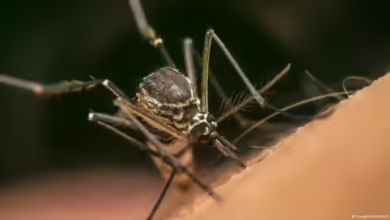Providing people with illness information to empower them
The fatal illness malaria, which is spread by mosquito bites, is still a major worldwide health concern, especially in tropical and subtropical areas. Its benefits on economies, education, and general development outweigh the short-term health effects. Raising awareness of the illness, control methods, and eventual elimination are essential to the successful fight against malaria.

First of all, it’s critical to comprehend the fundamentals of malaria transmission. Five types of Plasmodium parasites are known to infect people, and they are the cause of the illness. Anopheles mosquitoes, which are abundant in warm, humid settings, are the vector by which these parasites are spread. Early diagnosis and treatment of malaria depend on the ability to recognize its symptoms, which include fever, chills, headache, and nausea.
Controlling malaria requires a strong focus on preventive measures. Insecticide-treated bed nets—long-lasting insecticidal nets, or LLINs—are widely used and have been shown to be successful in lowering mosquito bites during sleep, which is a typical period for transmission. Insecticides sprayed inside residually (IRS) reduce mosquito populations even further, aiding in the fight against malaria.
Moreover, early diagnosis and treatment depend on having access to quality healthcare services. Rapid diagnostic tests, often known as RDTs, allow for the prompt diagnosis of malaria infection and the timely delivery of antimalarial drugs. The first line of therapy for simple malaria is artemisinin-based combination treatments (ACTs), which guarantee efficient parasite clearance and lower the possibility of drug resistance.
Programs for controlling malaria must include community involvement and education as essential elements. Communities may take proactive actions to protect themselves when they are equipped with information about the illness, how it spreads, and preventative measures. Health education initiatives, disseminated via many channels such as educational institutions, medical facilities, and community assemblies, serve to increase consciousness and encourage modifications in behavior.
However, worldwide cooperation and persistent efforts are needed to eradicate malaria. Research and development expenditures are crucial for the creation of new instruments and tactics, such as vaccinations, innovative pesticides, and enhanced diagnostics. Furthermore, improving health systems guarantees fair access to medical care and improves the delivery of malaria treatments, especially in areas with low resources.
For long-term success, the environmental and socioeconomic factors of malaria must be addressed. Static water bodies, deforestation, and subpar housing are some of the factors that promote mosquito breeding grounds and raise the possibility of malaria transmission. Socioeconomic differences that increase susceptibility to the illness include poverty and limited access to treatment and education.
Though they might vary, fever, chills, sweats, headaches, nausea, and vomiting are typical malaria symptoms. In especially in areas where malaria is prevalent, preventative measures, including mosquito nets, insect repellents, and antimalarial drugs are crucial. It is crucial to seek medical attention as soon as symptoms appear.
Increasing knowledge about malaria, how to avoid it, and how to cure it is crucial to the worldwide effort to manage and eventually eliminate the illness.
By implementing a thorough strategy that includes community involvement, early diagnosis, efficient treatment, and preventative measures, we may drastically lower the malaria burden and get closer to the objective of a world free of malaria. To ensure that no one is left behind in the battle against malaria, governments, international organizations, civil society, and individuals must work together on this project.







